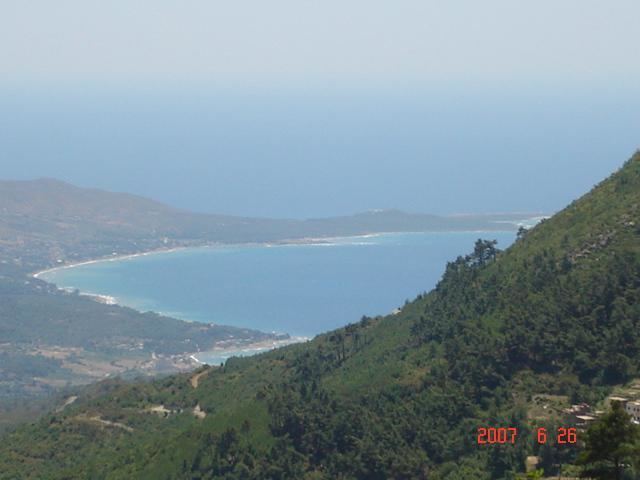Type settlement | ||
 | ||
Periods Late Bronze Age, Iron Age, Hellenistic period, Roman period, Late antiquity, Crusader period Excavation dates 1971–1984, 2000-present Archaeologists Paul Courbin, Jacques Y. Perreault, Nicolas Beaudry | ||
Ras al-Bassit (Arabic: رأس البسيط), historically known as Posideion or Posideium, is a small cape located 53 kilometres (33 mi) north of Latakia, Syria on the Mediterranean Sea. The cape is a popular resort destination and the coastline is unusual for its distinctive black sand beaches.
Contents

History

Ras al-Bassit is thought to be the site of the ancient Hellenic city of Posideium, mentioned by both Strabo and Herodotus.

Excavations led by French archaeologist Paul Courbin between 1971 and 1984 revealed a small settlement back to the Late Bronze Age, when it may have functioned as an outpost of Ugarit, to the south. Unlike Ugarit, Bassit survived to the passage of the Sea Peoples and into the Iron Age. It had strong links with Phoenicia and Cyprus, and a Greek presence was attested from the 7th century BCE. Bassit expanded and its acropolis was fortified in the Hellenistic period.

The Canadian archaeological excavations undertaken in 2000 have been focusing on the late Roman and Byzantine occupation of the site (Université du Québec à Rimouski / Université de Montréal). Bassit thrived from the late 3rd to the early 6th centuries CE; this period is marked by a number of important building projects. A church complex was built at the foot of the acropolis in the 6th century, as the site was starting to decline; the site seems to have been gradually abandoned soon after the Arab conquest. Excavation in the church yielded a small chapel from the Crusades period (12th to 13th centuries).

The port was still in use during the Crusades and was a destination for Venetian ships in the 15th to 16th centuries. By the 19th century, it was used only by the local fishing community.
Geography
Immediately to the north is Mount Aqraa, the highest mountain on the eastern coast of the Mediterranean.

